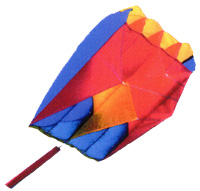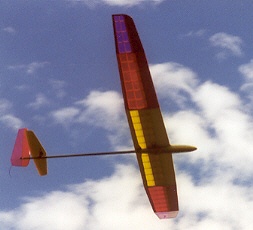Back at work today, which I’ll admit is a bit of a relief. Travelling does have it’s own stresses to be sure. Thinking about all that work you’ll have to come back to, not to mention things you’ve got to put off at home. Been thinking about php|tek 2006 over the weekend, and I’ve come up with a few final thoughts.
First, I’ll say that I did learn quite a bit at php|tek, but nothing that I was expecting to learn. My expectations for this PHP-centric conference were fairly broad. I had expected there to be a few very narrow, technical sessions with the majority being broader, more “this is where we are headed” type conversations. I did not expect many non-PHP-specific sessions to do me much of any good. What I encountered could be construed as completely the opposite.
The majority of the speakers at this conference were those either directly or almost directly related with the day-to-day development of PHP as a programming language. Many of the speakers were the originators of the stuff they spoke about, or at least had a hand in it. While this is truly a unique opportunity rarely granted in the IT world — to get to interact with the person who writes the language which you use each day — I don’t know if it is beneficial to most people who come to these conferences.
¨
The promised free WiFi access didn’t materialize until about 3 PM here after a fandango of new access points and provider snafus. Probably a good thing, though, as it allowed the small cadre of geeks who showed up to this con a day early to focus on the “In-Depth Seminars”.
Dan and I chose the “Master OOP in PHP 5″ talk hosted by Marcus Boerger, one of the architects of the PHP 5 object-oriented code. Marcus, who lives in Germany, offered up a very straightforward, detailed talks spikedwith a wry sense of humor that pops up when you least expect it. PHP 5 introduces a “revamp” (a term Marcus didn’t care for) of the OO system in PHP, and pushes it more in the direction of what passes for a standard in the OO world. Better privacy control, extensibility and overall greater functionality. A very worthwhile talk and very much on the bleeding edge of the PHP world.
The next talk was “PHP & AJAX: A winning combination” with John Coggeshall, a very outspoken and enthusiastic guy who works with O’Reilly (the publisher of many a great book on technology) and Zend (the engine behind PHP). AJAX is one of those buzzwords in the industry right now like “LAMP” (Linux Apache MySQL PHP) and “podcast”, which aren’t anything new (see earlier post on podcasting) but now have a name people can talk about. AJAX is Javascript (the duct tape of the Internet) and XML (sorta) that powers things like Google Maps and GMail. Very whiz-bang stuff that brings the web interface a little closer to being what you might expect on the desktop. John spoke a lot about what is wrong with AJAX, and suprisingly little about what PHP can offer it. He didn’t really tell Dan or I anything we didn’t know about AJAX, but in a roundabout way inform everyone that AJAX is still very new and fraught with problems. AJAX apps may seem simple on the web, but behind the scenes there are some very touch problems borne from the challenge of making computers interface with humans a little bit better. From that and the little PHP content, I gather that even PHP doesn’t really know what to do with AJAX until it matures a little.

John wrapped up around 3PM, which luckily allowed Dan and I enough time to beat a path eastward to the Kennedy Space Center. I’m a sucker for anything involving space, so this was a welcome and awesome side-trip. Kennedy Space Center sits out on a island off the Florida coast and our rented Toyota Prius got us there quickly, quietly and burning little gas.
Technorati: phptek
¨
Hola muchachos! I’m here in Orlando this week for the php|architect php|tek conference. PHP is the programming language that powers this site, and I have the opportunity (thanks to work) to attend this year. The keynote speaker is Rasmus Lerdorf the guy who started PHP, so I’m pretty hyped.
“All this for a programming language?” you say! Why, sure, yes. PHP is one of the best languages for creating dynamic web (and otherwise) content, and I have used it to create things such as phpfeed and instantRSS, both which enjoy(ed) moderate success and allowed me to further my knowledge of the language. Not to mention this site, LouisvilleSoaring.org among many other sites with which I have been involved.
So, all ye nerds, stay tuned. I’m staying at the Marriot Airport Orlando, and I should be blogging throughout the week-long conference, as php|tek has graciously offered up a WiFi access point for our usage.
Technorati: phptek
¨
I have, for a long while, resisted installing anything but the most nuts and bolts versions of Linux on the machines that I run. But then I realized that I didn’t care for doing hackish maintenance to get simple things to install or work – so I made a step-up to a Linux distribution for people who like customization, but don’t want to get their hands real dirty, and that was good for a while. However, there were still some things that I couldn’t do on my Averatec 3250 laptop that required hackery and mid-level wizardry. Both things that required me to do a lot of maintenance and general wasting-of-time.
Let’s face it – I’m growing older and whereas I used to enjoy maintenance on computers, I’ve been there, done that and yes, I have the t-shirt. I’ve made a giant and stood on it’s shoulders, but dammit, I’m old, I’ve moved on and I just want things to work out of the box! Though, at the same time, I don’t want something that is ridiculously bloated or weighed down with a bunch of apps that I’ll never use. This is a big change for ‘ol Ben. Part of allure and mystique of Linux was that you could “have it your own way”. However, that allure has mostly worn off as I have had it “my way”, but only through a lot of custimization and general time-wasting. Computers are tools to get jobs done, and I need them to “just work” sometimes!
So then, it follows in my progression of Linux distributions that I should end up with something like Ubuntu Linux. Small, lightweight and yet fully featured and easy to use. Installs in under an hour, and so far, everything has “just worked”. Power-saving CPU scaling? Works. Hibernates like Windows? Works. Fan-control so it doesn’t overheat OR be really loud? Works. Sound/Graphics? Works. Wireless Internet without a lot of hassle? Yup. I highly recommend it. More updates at a later date…
Update: While there are many nice configuration options for the Ubuntu desktop (powered by Gnome), there was not one to allow me to change the default habit of the desktop locking when you closed the lid of the laptop. After googling a little bit and figuring out where the configuration files are, I found the /usr/share/acpi-support/screenblank file. To change this behavior you need to just change one line:
From this:
su $user -c “(xscreensaver-command -throttle; xscreensaver-command -lock)”
To this:
su $user -c “(xscreensaver-command -throttle)”
¨

Focused readers of this site know that I enjoy “do-it-yourself” stuff, from my own software projects, to all that soaring stuff and I’ve even made my own beer (not to mention the picnic table)
In a world where most every thing we could want is ready-made and cheaply available from Wal-Mart or Target, there is a certain romantic and satisfying (to some) ideal in making your own whatever, be it a scarf, or a hat, or even a microprocessor-controlled lost-model-alarm.
Last year, I was alerted that the venerable O’Reilly publishing company was going to publish a magazine for DIYers called (aptly) MAKE. It’s a great compilation of geeky and not-so-geeky DIY projects from Kite Aerial Photography to Making Your Own Biodiesel to learning to weld! And, on a not-so-side note, for a day-to-day DIY fix, make sure to check out the MAKE:blog.
Finally, what really fueled this post was Talk of the Nation‘s interview with the editors of both MAKE and ReadyMade magazines back on December 28th, called Inside the World of “Do-It-Yourself”. Give it a listen.
¨
The weather sages around town say that snow en-quantite’ is incoming to Louisville tomorrow, so in reaction I’ve updated my silly little exploding snowflake javascript thing called snow2. Originally written way back in 2002 (also here), it has been updated to work in today’s modern browsers. Enjoy!
¨
…but that”s what happened to me yesterday.
Kelly and I were at Oxmoor and stopped inside Sharper Image. You know
– the kind of place where you can get a robotic calf massager, a
robotic vacuum cleaner, even a robotic… robot. In the middle of
store, prominently displayed (but outside the reach of small children)
were the Master Replicas Star Wars lightsabers!
I said “OOOH! SHINY!” and immediately went over and picked it up off of
it”s display case. I believe it was the “Darth Vader” model. There was
also a nice family of a father and like three kids “playing” with the
“Anakin” model. I hear the Dad say “uh, now kids, this ain”t for
swinging now — these are $125 a piece!” I chuckle and lapse back into
my daydream of standing on the bank of a lava-flow yelling “YOU WERE THE
CHOSEN ONE!”, with Matt Rasnake”s brother Javan standing down below w/o
3 of his appendages. Now me, I”m standing there with a goatee, sandy
blonde hair parted a little to the left gripping this thing with two
hands, just thinking one word over and over in my mind — “AWESOME
AWESOME AWESOME”. The dad then snaps my concentration and says “Hey
man — my kids think you look like Obi-Wan, you know, but like Young
Obi-Wan”. Now, this dude was black, so I was automatically thinking
“Mace! You old cock! How are you?!” but declined to say such a thing.
Nonetheless, I thanked him and his apparently awe-struck children
(judging by the looks on their faces) and went on our way. Upon
reflection I should have whipped out some great Obi-Wan scenes like
walking over to the people looking at the Roomba robo-vacuums and waving
my hand saying “these aren”t the droids you are looking for”.
So yeah, that was pretty awesome. Next time you are dragged into that
mall, I suggest you check them out.
¨

I’ve always been a passive automotive fan. I attended car shows with my dad as a youngster, and pined over a Willys Jeep and a ’57 Chevy Nomad wagon later on. I’ve owned a ’69 Volkswagen (automatic stickshift), a ’74 Ford Maverick, and an ’85 Volvo 240 (with a crank sunroof!) All of which I’ve cared for and done routine maintenance on. I enjoy driving, and I enjoy the very idea of a car as an engineering marvel, a sign of the times and as a veritable playground of the imagination.
But, these feelings have always lain a little dormant, a little behind-the-scenes. I don’t think about it every time I get into a car and my Nissan Maxima has really just been my Point-A to Point-B machine for the last 5 years. I’ve been complacent.
That is until recently. I watch Mythbusters on the Discovery Channel most Wednesdays with Kelly – and about a month ago they started showing this program called Top Gear from the BBC. Top Gear is hands-down the best review show I have ever seen. Bar-none. They review everything from super-cars to compacts to the oddballs you’ll never see. Throw in ridiculous races (Ferarri vs. Jet Plane, Pigeon vs. Citroen), an enigmatic test driver named “The Stig”, tons of spot-on British humor, hatred of caravans, and an absolute heap of passion about cars and you’ve got it. It’s unlike anything you’ve seen or will see about cars and will make you think about hitting the apex next time you go around the corner of your street. I know it has me!
You can watch a clip of Top Gear where they review the awesome Ariel Atom either
here (80 MB WMV) or here (streaming). That is the car in which host Jeremy Clarkson is riding in the image above. 0-to-60 in 2.9 seconds. To quote: “My epiglottis is filled with bees! I’ve got so much nature in my hair you could film an episode of Badger Watch in there!”
Update: Further reviews and such (including another Top Gear segment where a guy from the Top Gear magazine drives the Atom to the Artic Circle and back) here: http://www.openwheelers.co.nz/newmodel/reviews.htm.
¨

Lately, I’ve been more interested in a previous pseudo-hobby of mine — kite flying. Specifically, I was spurred on by O’Reilly’s new MAKE Magazine which I recently subscribed to. In their premier issue, they had a good spread on kite-aerial-photography (KAP for short). I have already done some aerial videography with my RC camera so I already had half of the rig.
Back in the day, Art Black and I used to fly kites during the summer, and I had nice old 6-foot rip-stop delta kite from Go Fly A Kite. Recently, Target was selling some decent rip-stop nylon kites for under $10, so I picked up a nice little parafoil kite. Parafoils are neat because they are A) very stable and B) have no hard parts to them. They just fill up with wind and won’t shatter into a billion pieces if you cram it into the ground.
Last Sunday, Charlie and Dalton joined me out at Charlie Vettiner Park (after the wind-cancelled LASS soaring contest) to fly some kites. Much fun! Charlie and Dalton brought along a cool little stunt kite made from rip-stop and carbon fiber tubes. You could crash that little bastard into the ground all day long and it wouldn’t break! Not bad for less that $10!
Anyway, I’m planning on making a rig for my wireless video camera soon. More on this later. In the meantime, check out the NASA Interactive Kite Modeler. Your tax dollars at work!
¨

After nearly 6 months of building, I have finally completed my Allegro-Lite sailplane! I started at the beginning of November last year, and just this week finished it up. It’s a great feeling to finally get something like this done, and just in time for soaring season! To celebrate, I have started cleaning up my shop downstairs to make way for the ship I’m going to use for the Louisville Area Soaring Society’s Speed 400 F5J Electric Sailplane Competition coming up in August.
Anyway, back to the Allegro-Lite — it’s a really cool plane, from a completely nerdy point of view. You see — most “competitive” (meaning “efficient”) model sailplanes these days are really expensive — they involve things like hi-load foam, Kevlar, carbon-fiber, and generally a lot of expensive composite materials. Those materials can make things really strong, and yet really light — which is something you need for a really efficient wing on a plane. Well — the Allegro-Lite is an exception because A) it’s made from wood with some carbon fiber (not terribly expensive, B) it is really light and C) despite the previous two things, it is REALLY strong! The design is completely free to the public (courtesy of Dr. Mark Drela from MIT), and there are plenty of other Drela-devotees around to offer help, and in the case of the Allegro-Lite, a near-complete walkthrough. I’ve even pitched in myself with a build gallery with annotations.
So, this summer I intend on getting out and flying as much as I can, and competing as often as I can in regional contests. The Allegro-Lite will be along for the tow as well!
¨









